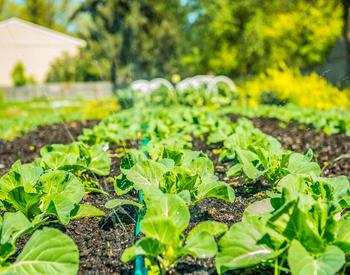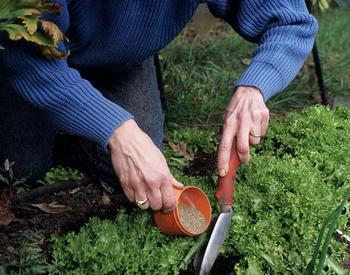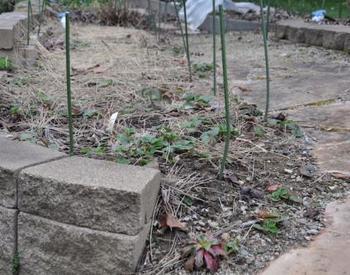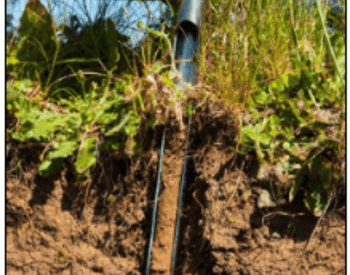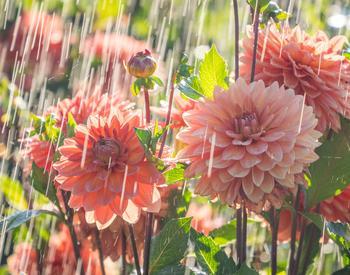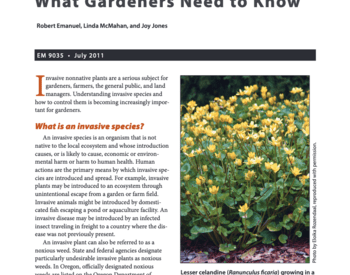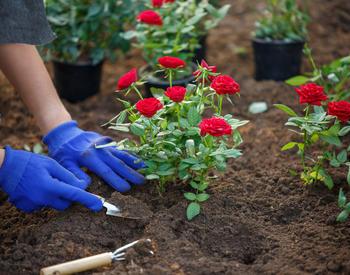Timely advice on garden chores, fertilizing, pest control, and more from OSU Extension.
These tips are not necessarily applicable to all areas of Oregon. For more information, contact your local Extension office.
Oregon State University Extension Service encourages sustainable gardening practices.
Practice preventive pest management rather than reactive pest control. Identify and monitor problems before acting, and opt for the least toxic approach. Conserve biological control agents such as predators and the parasitoids that feed on insect pests.
Planning
-
Construct trellises for tomatoes, cucumbers, pole beans and vines.
Maintenance and cleanup
-
Prune lilacs, forsythia, rhododendrons and azaleas after bloom.
-
Fertilize vegetable garden one month after plants emerge by applying a side dressing alongside rows.
-
Harvest thinnings from new plantings of lettuce, onion and chard.
-
Pick ripe strawberries regularly to avoid fruit-rotting diseases.
-
Use organic mulches to conserve soil moisture in ornamental beds. An inch or two of sawdust, bark dust or composted leaves will minimize loss of water through evaporation.
-
After normal fruit drop of apples, pears and peaches in June, consider thinning the remainder to produce a crop of larger fruit.
-
Make sure raised beds receive enough water for plants to avoid drought stress.
-
Mid-June: If green lawns are being maintained through the summer, apply 1 pound nitrogen per 1,000 square feet to lawns.
-
Central Oregon and higher elevations of eastern Oregon: Frost can still be a concern during cold nights. Protect young vegetables from frost by having row cover (frost cloth) on hand. Place over crops when needed. Use season extenders, such as walls of water, around tomatoes and other tender plants.
-
If you want a green lawn, water frequently during periods of heat and drought stress. Irrigate 0.25 inches four to six times per week from June through August. Measure your water use by placing an empty tuna can where your irrigation water lands.
Planting and propagation
-
Plant dahlias and gladioli.
Pest monitoring and management
Use chemical controls only when necessary and only after thoroughly reading the pesticide label. First consider cultural, then physical and biological controls. Choose the least-toxic options, and use them judiciously. Some examples include insecticidal soaps, horticultural oils, botanical insecticides, and organic and synthetic pesticides.
-
Central Oregon and high elevations of eastern Oregon: Manage weeds while they are small and actively growing with light cultivation or herbicides. Once the weed has gone to bud, herbicides are less effective.
-
First week: Spray cherry trees for cherry fruit fly, as necessary, if fruit is ripening.
-
First week: Spray for codling moth in apple and pear trees, as necessary. Continue use of pheromone traps for insect pest detection.
-
Learn to identify beneficial insects and plant some insectary plants, — such as alyssum, Phacelia, coriander, candytuft, sunflower, yarrow and dill — to attract them to your garden. Check with local nurseries for best selections. For more information, see Encouraging Beneficial Insects in Your Garden.
-
Blossoms on squash and cucumbers begin to drop; this is nothing to worry about. Cherries may also drop fruit; this is not a major concern.
-
Monitor azaleas, primroses and other broadleaf ornamentals for adult root weevils. Look for fresh evidence of feeding (notching at leaf edges). Try sticky trap products on plant trunks to trap adult weevils. Protect against damaging the bark by applying the sticky material on a 4-inch wide band of poly sheeting or burlap wrapped around the trunk. Mark plants now and manage root weevils with beneficial nematodes when soil temperatures are above 55 degrees Fahrenheit. If root weevils are a consistent problem, consider removing plants and choosing resistant varieties.
-
Control garden weeds by pulling, hoeing or mulching.
-
Control aphids on vegetables as needed by hosing off with water or by using insecticidal soap or a registered insecticide.
-
Watch for 12-spotted beetles on beans, cucumbers and squash and cabbage worms or flea beetles in cole crops (cabbage, broccoli, Brussels sprouts). Remove the pests by hand or treat with registered pesticides.
-
Birch trees dripping a sticky fluid from their leaves means that aphids are present. Control as needed.
-
Use yellow sticky traps to monitor for cherry fruit fly. About 1 week after the first fly is caught, spray cherries at appropriate intervals.
-
Last week: Second spray for codling moth in apple and pear trees, as necessary.
-
Continue monitoring blueberry, strawberry, cherry and other plants that produce soft fruits and berries for spotted wing drosophila. If these pests are present, use an integrated and least toxic approach to manage the pests. To learn how to monitor and manage spotted wing drosophila.
Indoor gardening
-
Move houseplants outdoors for cleaning, grooming, repotting and summer growth.
Trade-name products and services are mentioned as illustrations only. This does not mean that the Oregon State University Extension Service endorses these products and services or intends to discriminate against products and services not mentioned.

